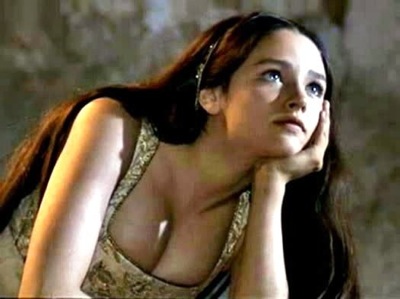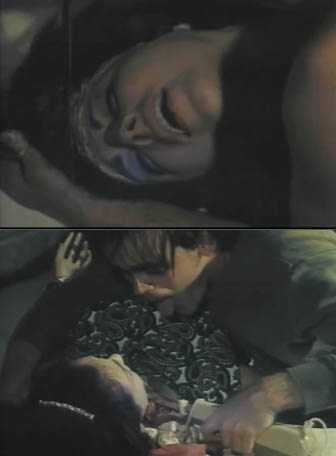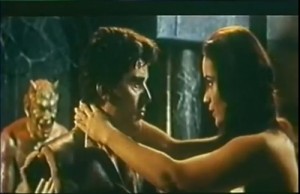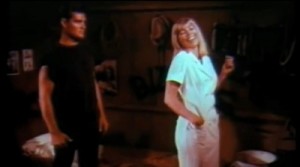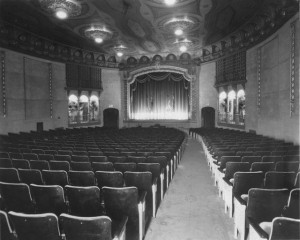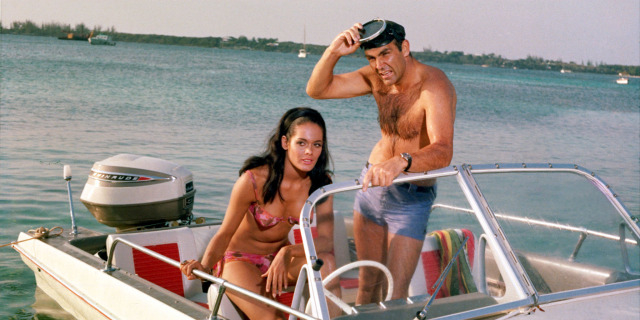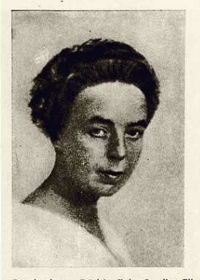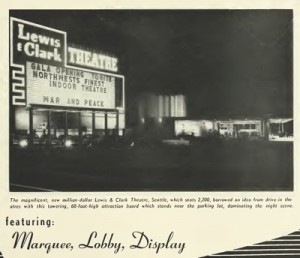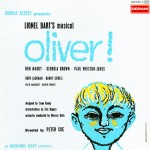Click here to print
When You Renovate, Keep Your Eyes Open for Movies
posted February 28, 2018
[This article originally ran in 2013.]
By Peter Monaghan
Old houses’ wall cavities can be a delightful kind of repository. Ten year olds might imagine they’d contain treasure maps, or at least rolls of twenties in crumbled rubber bands. But the structures are rather more likely to conceal wads of newspaper. Odd troves of news. On occasion, a kind of moving-image archive, too.

Last week, I crowbarred away the jambs of my back door. Apparently the last time that was done was in 1969 because as soon as one length of molding came away, desiccated folds of newspaper fell to the floor.
On top of the pile was the movie section of Sunday, August 17 of that year, from one of this city’s then-two dailies, the Seattle Post-Intelligencer, R.I.P. (born 1863, when the population was 1,000; went online-only and largely irrelevant, 2009).
Perusing those pages naturally became more appealing than fitting a new door. They revealed that, that week here in the Emerald City, filmgoers had such options as South Pacific, Chitty Chitty Bang Bang, and Goodbye, Columbus. Standard major-studio output.
Two John Wayne vehicles were on offer, including Henry Hathaway’s True Grit, just out. You couldn’t have known then that you’d have done better to wait for the Coen brothers’ 2010 remake of the drunkard-cowboy murder-revenge tale – that Jeff Bridges would muster a far more compelling Rooster Cogburn than Wayne had.

Gina Lollobrigida in Buena Sera, Mrs. Campbell
True Grit was way south of the city, while at the downtown Colonial, now gone, Hellfighters promised more of Wayne’s preposterous bully-boy act. He played Chance Buckman, a Red Adair-like oil-well firefighter. Frankly, I’d have lingered in the foyer to await the main feature, Buena Sera, Mrs. Campbell. My apologies to the mystifyingly still-numerous Wayneophiles, but the main feature, Melvin Frank’s then recently released comedy, featured Gina Lollobrigida. Carla Campbell, the Lollobrigida-lovely lead, faced a dilemma: For 20 years she had been collecting child-support checks from all three of the possible WW2-GI fathers of her kid – and the three lotharios were en route to a 20-year reunion in the Italian village where she had remained.
Duly, the long-ago lovers come calling, alerting Carla’s husband to her past so that he wonders whether her only walks-on-the-wild-side had been with the GI’s played by Telly Savalas, Peter Lawford, and (she had apparently been catholic at least in her taste) Phil Silvers. The film’s best line comes when the exasperated Carla retorts: “No one has ever laid a hand on me for 20 years, except you and the fathers of my child!”
All that, aside, the promise that would have kept me waiting was that Lollobrigida was – here as throughout her career – generously bosomed.
Give me a break! In 1969 I was 13 and even then, male.
But I get ahead of myself. After perusing the movie pages of August 17 1969, Seattleites would next have taken into account the weather – as they still do. Rain is generally brief and light, during August, and that week none arrived at all. Thermometers barely reached the mid 70s Fahrenheit (about 20-22 Celsius), but that’s warm enough by Seattle standards to encourage the citizenry not to be indoors on any long day of sun – the rain would be not far off, and might dampen most days for months.
That 1969 week’s climate was not auspicious for movie-house profits, then. Seattleites looking for movie distraction would likely have chosen the screenings with later start times.
To have strolled out to get to cinemas might seem, at this remove, to have been an inviting prospect. But the nationwide era of political and racial unrest had got under way, which would have cowed plenty of inequity’s perpetrators.

The Pratt home – the gunmen killed Edwin Pratt outside his front door in a neighborhood north of Seattle where residents might have been surprised to find themselves with a black neighbor, and none too pleased.
Early in the year in largely white Seattle, two gunmen (never reliably identified) shot and killed Edwin Pratt, a respected civil-rights leader, outside his snow-surrounded home. He had led campaigns to redress racial discrimination in housing, schooling, employment, and policing.
The history website, Radical Seattle Remembers, relates that in 1968 and 1969, black youths responded angrily to police harassment and poor provision of social services. Riots broke out in an area of the city named the Central Area (now commonly called the Central District). It was into that area, not far east of downtown Seattle, that “restrictive covenants” had corralled African-American home owners and renters. The covenants were deed restrictions that forbade sales and rentals to members of various “non-white” racial and ethnic groups, such as Filipinos, Japanese, and Chinese, but African Americans most of all, as they had come to comprise the largest minority group due to their postwar population boom.
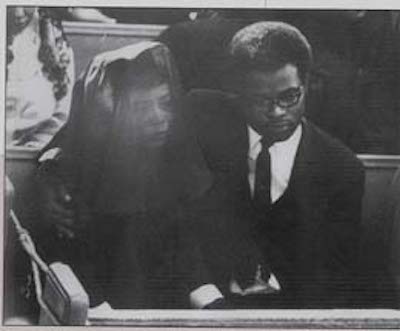
Edwin Pratt’s wife, Bettye, and son, Bill at his funeral, St. Marks Cathedral, Seattle, 26 January 1969. Photo: Urban League of Metropolitan Seattle
In their extraordinary rhetoric, the covenants typically were worded to target any “person or persons of Asiatic, African, or Negro blood, lineage, or extraction.” Such restrictions were perfectly legal, and were deployed in concert with “red-lining” in which banks denied credit to non-white applicants, particularly if they became so bold as to try to settle outside the bounds that city fathers imposed on them.
In the summer of 1969, Seattleites who contemplated a night at the movies but fretted about tension in their town may have recalled that it was only a year earlier, in 1968, that the City Council finally prohibited those practices. It had passed its ordinance three weeks after the assassination of Martin Luther King Jr. But little had really changed.
Not surprisingly, anti-racism organizing remained strong in the Central District. It was there, for example, that the Seattle chapter of the Black Panther Party set up. Its members were subjected to the same surveillance and dirty tricks that the Federal Bureau of Investigation under J. Edgar Hoover had mounted nationwide to vilify and suppress activism. Violent police responses to protests by the Seattle Panthers’ members and supporters provoked further rioting.
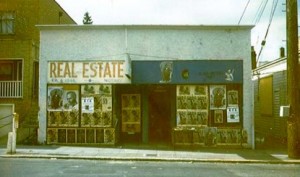
The original Seattle Black Panther Party headquarters in the Central District.
But by 1969, organizers were shaping anger into effective action. An association of black contractors, for instance, made concrete its objections to discrimination against black contractors and construction workers by shutting down every major federally funded building project in the city.
Increasing heat on the streets was mounting opposition to American military action in Vietnam. In 1968 it had flared at the Democratic Party’s national convention, held that year in Chicago. Violent suppression of protests there and then prosecutions of protest leaders provoked sympathy protests in Seattle and many other cities.
When it came to civic accomplishments, about the best Seattle could boast was that a year earlier voters had finally approved the financing of a new downtown stadium for professional baseball and American football teams – the surpassingly ugly, covered Kingdome, which the county mercifully imploded in 2000 to make way for yet another massively taxpayer-underwritten playfield for those 10 home games each year. That the citizens of Seattle and surrounding King County would approve such a boondoggle after twice earlier resisting it is hard to fathom, at this remove. An economic slump triggered by rising oil prices had slammed the region. Its largest employer (even now), the Boeing airplane company (“Boeings,” among us locals) had fallen behind schedule on delivery of its Boeing 747 “jumbo jets.” That and other downward forces on employment led to something of an exodus from the city.
In other ways, too, the town was changing – edging away from its Scandinavian, Protestant reserve. Early that summer, still-little-known Led Zeppelin almost blew it away. Preceding Three Dog Night, now barely mentionable in the same sentence, they unloosed a Richter 6.9 assault at a popular lake-centered park that was closed a year later due to structural damage. The venue was the outdoor Green Lake Aqua Theatre, which since 1950 had hosted the likes of “swimusicals” and the Aqua Follies, who plunged to a pool 40 feet below from stage-side diving towers.
But still I get ahead of myself.
Decades ago now, builders stopped using newspapers to insulate houses and minimize draughts. New materials had come along – purpose-made substances like blown-in fiberglass, mineral wool, polyurethane foam, and polyisocyanurate, a tongue-challenging “thermoset plastic.”
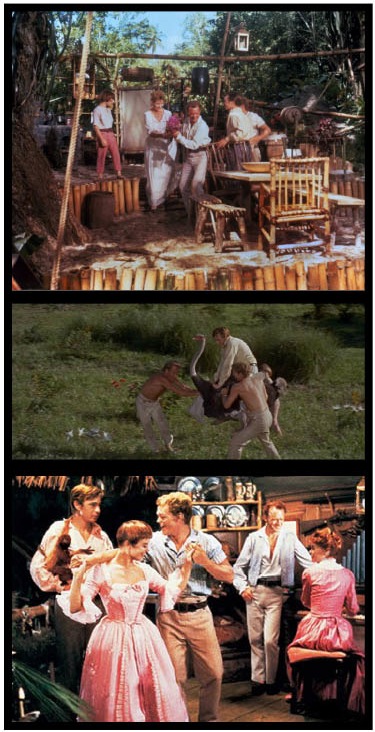
The Robinson ideal family enjoys the fruit of its resourceful labors, disports with a member of their island’s improbable menagerie, and gets funky with the fetching young lady / cross-dressing pirates’ quarry over whom the teenage sons Robinson – ideal but that doesn’t quite mean gelded – squabble. All this befoe heading out to man their rock parapets and from there to bomb, shoot, clobber, dispatch to rocks below, and crush with a giant log roll – and a tiger – the marauding pirates who just happen to be beastly, subhuman, and Asiatic.
So, so boring. Those tell nothing particularly interesting about their eras. They could not relate that, during the week beginning Sunday, 17 August 1969, Midnight Cowboy was showing, right here in downtown Seattle. And Peter O’Toole and Katherine Hepburn were jostling in the King Henry II drama, The Lion in Winter, set in a frosty 1183 A.D.
Disney was all over the place, as ever – Chitty Chitty Bang Bang (at a drive-in, naturally), Love Bug (inappapropriately not at one), Peter Pan… Teamed at the still-standing Crest (now Seattle’s only cinema where fading first-run movies can be seen for $3) was more Disney in the form of a reprise of the feel-good 1960 version of Swiss Family Robinson. Its resourceful heroes-of-family-values, shipwrecked en route to New Guinea, were doing the Crusoe thing on a deserted tropical island. (The story was again committed to film for the umpteenth time in a 1975-76 TV series among whose cast was Helen Hunt – the Helen Hunt, a couple of years after she began her small-screen debut at the age of 10.)
Suggests little Ernst: “Why don’t we put up a distress flag?”
Self-pitying, his old man (John Mills) retorts: “Don’t you think we look distressed enough? Ernst, anyone who sees a ship stuck on the rocks might possibly guess it’s in trouble.”
But of course the family pulls together because that’s what Waltons-like pull-together-families did, in 1960s America – even when Hollywood puppeted them on a geographically improbable island stage: it had monkeys, elephants, ostriches, and lions, all remarkably flourishing on so confined a terrain.
It was all tired, way-it-never-was, heroic-family-fantasy rubbish. And this particular variant had an uncommonly sanctimonious soundtrack, too. And de rigueur jibbering non-white savages, in this case Asiatic. Consciousness of the racist nature of depictions of American Indians being picked off from atop rock bluffs had not yet reached public consciousness, so it was not too late for Robinson‘s producers to deploy demi-human savages of another hue and brow, and even a long way yet from the time when Steven Spielberg would, with little disapproval, deploy Arabs in similar fashion in such films as 1981’s Raiders of the Lost Ark.
Speaking of homiletic adventures on the high South Seas, South Pacific was wreaking its condescending counterfeit of Polynesia in theaters in three outlying reaches of Seattle. In the role of the White Man’s Exotic Love Interest was French–Vietnamese actress France Nguyen, whose screen name, Nuyen, stripped the ‘g’ from the original – the most common Vietnamese family name.
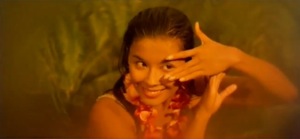
France Nguyen in “South Pacific”
When the film’s 50th anniversary shindig came around, in 2008, Nguyen received no invitation, or so the story goes. Good thing she had by then trained in psychotherapy, and was practicing in Los Angeles. For her work with abused children and women, she received the city’s 1989 Woman of the Year award. Early in her career she had prepared for working with the deranged through an affair with Marlin Brando – “He just wanted an excuse to be a big little boy and dress up and be someone else and see how long he could fool everybody.” She went on to appear in the third season of Star Trek.
Scene-Stealing “Co-hits”
Truth to tell, the wall-stuffing’s references to still-well-known movies was less interesting than listings of movies little heard of, today, and the generally vanished theaters that screened them.
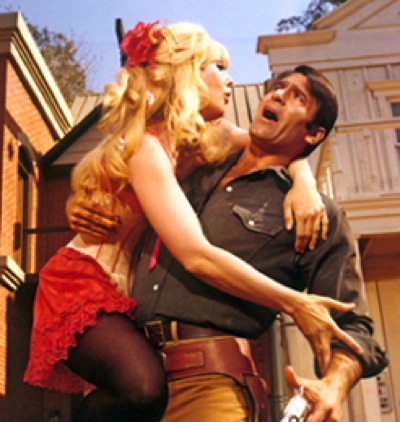
“The Great Bank Robbery” – an embrace that would make many a man swoon
Often but not always, the now-little-remembered films were 1969’s “co-hits,” as cinema operators referred to double-features’ opening offerings. It seems almost quaint to be reminded, now, that in that long-time-ago, double features were almost the norm. This was before the movie industry ramped up its abuses of its customers, in that regard.
The co-hits screened back then, as well as the plain-and-simple B-, C-, or D-movies, are today’s go-to fillers of TV graveyard hours. The Great Race, for example, ran before The Great Bank Robbery, and like it, employed a quintessential, pervasive Hollywood hook: the appeal of the bad actor.
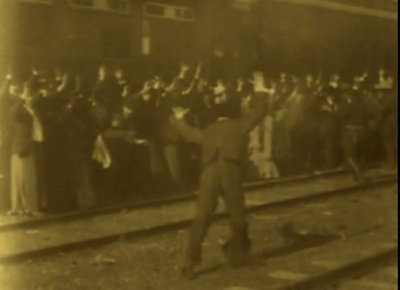
Now, that’s a stick-up! Some dope always tries to make a run. “The Great Train Robbery” (1903)
Not the actor of little talent, but the unruly individual variety of bad actor.
The title of The Great Bank Robbery echoed The Great Train Robbery, Edwin S. Porter‘s 1903 twelve-minute western. The latter was one of the earliest narrative movies, and earliest riff on a go-to movie theme, ever since: theft is thrilling. The Great Bank Robbery, prolific TV director Hy Averback’s 1969 spin on that facile riff, was a western-as-farce that starred Zero Mostel, Kim Novak, and Clint Walker. Set in 1880, it depicted a collision among three competing plans to rob a bank in the Texas frontier town of Friendly. (Among its highly unlikely cast of characters: charismatic lawman, played by Clint “Cheyenne” Walker, savvy outlaw, bogus priest, obligatory bandito, corrupt mayor, renegade explosives expert, and Kim Novak as a nun with attitude who poses as Lady Godiva.)
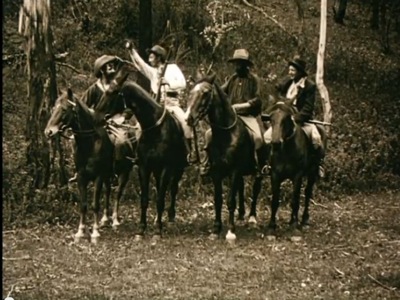
The Story of the Kelly Gang is a 1906 Australian film that traces the life of the legendary infamous outlaw and bushranger Ned Kelly (1855-1880). Charles Tait wrote and directed. The film ran for more than an hour, and was the longest narrative film yet seen in Australia, and the world.
It is a matter for psychologists and cultural historians to determine why robbery, whether of stage coaches, trains, convoys, or banks, has so captivated moviegoing audiences for so long – in fact, since the art form’s first days, and as far afield as Australia. There, in 1906, a 60-minute celebration of highway criminality, The Story of the Kelly Gang, by Charles Tait, could lay claim to being the longest narrative film, yet.
Is it only in recent years – with films like The Assassination of Jesse James by the Coward Robert Ford – that filmmakers have thought much at all about how grinding the Western outlaw’s life must have been? All that sitting around plastered on rotten whiskey, shooting at stones, daggering scorpions, and chafing for the black-hat boss to initiate another snivelling crime against townsfolk. These days, the gang would presumably be back at the shack riveted to X-Boxes for 13 hours a day.
Double-billing The Great Race and The Great Bank Robbery was a natural – at the least for the consonance of titles. Both exemplify how much makers of popular movies of that and probably any era can assume that a sure-fire recipe for success is daredevil rowdyism, from the irresponsibly reckless to the plainly sociopathic. There’s no missing the appeal of adrenaline-and-irresponsibility genres to swaths of boys and man-boys, but if there’s much that appeals in them to women, there’s something I’m not getting.
At The Neptune, too, muddled gender encounters were front and center, that week. That regal theater opened in 1921, and is now the only still-standing building of the five that operated as movie houses around the University of Washington during the silent era. A couple of years ago, it abandoned film in favor of rock shows and other entertainments.
But in Augustl 1969, it had Franco Zeffirelli’s Romeo and Juliet, with Olivia Hussey and Leonard “Len” Whiting. (Whither, he? In 1992 he reflected to People Magazine that his career had followed a course laid out by Orson Welles. Before his star turn as Romeo, he had some high-profile stage roles including 18 months as the Artful Dodger in Lionel Bart‘s Oliver! on the West End. He remarked to People magazine: “Orson Welles once said ‘I started at the top and worked my way downward.’ I can identify with that.”)
The film holds up well, now, by the way. Zeffirelli, unlike so many stage directors before him and since, realized that Shakespeare’s invention was not about romantic or tragic-romantic love, but about the onset of delirious, juvenile, lust-superboosted abandon. (Wouldn’t any youth have come away addled from grappling with Argentinian actress Olivia Hussey, 15 and devised by Zeffirelli as blitheringly radiant and extensively enough naked?) Other than for the force with which they advance that theme, the deaths are really neither here nor there. Zeffirelli cannily captured Shakespeare’s compare-and-contrast of the lovers’ and the families’ encounters – both mortally serious, but both really quite ridiculous.
Unconvinced? Consider Antony and Cleopatra – or, for an evocation of the midway from juvenility to maturity, the love-on-adulthood’s-threshhold of The Winter’s Tale.
Schlock and Other Shockers
But I digress. The near-hits and the appropriately forgotten non-hits…
At a horror triple-bill of horrible films, every offering presumably is not the headliner. The Sunset had a triple-threat special that included Herschell Gordon Lewis’s 1967 schlock-shocker, The Gruesome Twosome.
A demented crone who runs a wig business – for the girls at the local Florida college, she explains – prevails upon her mentally retarded son to kill and scalp young women to provide her with her trade’s requisite hair. “He cuts the overhead, if you know what I mean,” says the ghoulish Mrs Pringle.
It relieves this cinematic savagery only a little that the make-up artists were severely ham-fisted, and that the plot also has a “co-ed” sleuth investigate the mother and son’s links to additional killings at the college.
However dressed up, the film depends on the horror-film recipe of fascination, indulgence, and cliché: gratuitous torture, dispatch, disemboweling, and other disfigurement of young women, ideally discovered naked behind frosted shower screens. Even in the film’s trailer, Old Lady Pringle assures: “It’s a sort of comedy, because [the son] Rodney has a divine sense of humor” – as he gores another young woman.
Also to draw in a crowd, a barker, creepy as any discount-insurance peddler, assures trailer viewers: “If you’re the least bit squeamish, cover your eyes and turn around in your seat,” as if splay-limbed discomfort reduced traumatization. From the same deranged individual who brought us Blood Feast, “already a classic of horror, and shown at many film festivals,” we now can see “a new film which reaches the heights of nightmarish horror never before even attempted on screen.”
Sharing that lighthearted evening at the cinema was Witchmaker, then just out, in which a psychic researcher and his assistants investigate a series of murders of beautiful young women. “Their Form Is Human But They Have Crossed Over … Is There Sex After Death? They Came To Investigate Witchcraft … and found TERROR!”
Trailer: “It’s been 50 years since a man has looked at me like that.”
Oh, and what do you know: women in underwear raped, hung upside down… With zombification as the end goal, it all flies.
Were they kidding?
And then Byron Mabe’s She Freak of 1967, in which Jade Cochrane (Claire Brennen), “a country girl who knew there had to be something better than waiting tables in a greasy roadside stand,” runs off with a carnival. She quickly discovers that “she despises freaks and human oddities.” She Freak was the best that $65,000 could buy in 1969. It begins with the caution of a carnival barker: “Ladies and gentlemen, you’re about to behold a sight so strange, so horrifying, so utterly monstrous, that I urge you who are easily frightened or upset, who suffer from nervous disorders, weak hearts, or queasy stomachs, who experience nightmares, and any children under the age of 16, to forgo witnessing this exhibit.”
Well, OK, “look if you must.”
The guarantee, if you do: “You’ll shudder in panic when you behold lust-inspired human combat, all the more appalling in crimson-stained color” – barbaric acts on “a monster midway on the alley of nightmares.”
All of it “filmed on location on one of America’s largest traveling carnivals, where it could have happened,” with Jade exhibiting the finest in horror gender politics: getting hot for a carnie after he smacks her upside the head.
If the writers of copy like all the preceding haven’t generated a passel of PhD theses, yet, now may well be as good a time as any.
Three edifying classics, all.
The Theaters: Where Are They Now?
What kind of group-think self-loathing is it that moves us to consign iconic structures to the wrecking ball? Couldn’t we redeploy them – preserve at least the buildings as repositories of cultural memory?
 The question is sadly rhetorical. The palaces and humbler movie houses of 1969 — not so long ago — are for the most part long gone.
The question is sadly rhetorical. The palaces and humbler movie houses of 1969 — not so long ago — are for the most part long gone.
A jewel of downtown Seattle movie-going at that time was the 846-seat Music Box, which fairly billed itself as “The Beauty Theatre” of the city. It was a little madcap, too: its huge screen barely fitted in the house.
The extraordinary movie-house history site, Cinema Treasures, relates that the Music Box opened in August 1928 but came to grief with the wrecking back in 1987. That civic accomplishment was among the first I noticed after I came to the city, the previous year. As the movie pages of August 17, 1969, fell out of my back door’s architrave, under repair, here was the Music Box, again. Its management announced that it was screening Daddy’s Gone A-Hunting – (the 1969 one, not the vaguely related 1925 one): “What made you leave him, Cathy? Was it the way he made love, or why?”
It was the prolific Mark Robson‘s first film after Valley of the Dolls. He would later make a smash-hit Peyton Place, too. The Quebecois, California-schooled lawyer had come to film late, first in props at 20th Century Fox, then at RKO Pictures. By his late 20s, in 1940, he was helping Robert Wise edit Citizen Kane. From there, he was off and running. Among the numerous films he directed was Home of the Brave, a pioneering film critique of racism.
Fraulein Doktor (1969) ran before Daddy’s Gone A-Hunting. A World War I spy thriller, it apparently has never been released for home viewing, but is one of those films that mysteriously pops up on the usual suspect websites.
It had a tremendous cast interpreting the tale of a World War I German spy, Fraulein Doktor (Suzy Kendall). She heads a team that readily breaches British and Allied defenses. Her accomplishments cover the waterfront of Mata Hari-like scheming: she seduces whoever she needs to – van driver, brilliant scientist, no matter – to subvert Allied attacks on Germany, crack a cipher and enable a German sub to sink a ship carrying a British admiral, and steal a formula for the mustard gas with which German fiends poisoned enemy infantrymen.
The effect of the gas is demonstrated on a battle field in France where German troops slaughter an entrenched French battalion. In voiceover, a German commander boasts that, unlike its enemies, the German Army has the courage to deploy the heinous substance, which inflicts chemical-burn blisters and asphyxiates. (The film fudged the battlefield scene, a bit, because the horrific effects of mustard gas rarely emerge within 24 hours.)
A peculiar feature of the film is that the deadly Doktor is portrayed as a rather dreamy, morphine-addicted, virtually effortless seductress. If her vacant eyes betray psychopathy, director Alberto Lattuada makes viewers do most of the detection. And the film’s protagonist exits the film still alive, where virtually all her co-conspirators have appropriately perished.
 What’s more, throughout the dreadful events, Fraülein Doktor remains gorgeous, which aids and abets her gift for seduction. Presumably you don’t make your film’s star ugly even if her soul lacks all empathy – particularly, not when the star is the country-fresh beauty that Suzy Kendall was, at the time. The English former model was much-sought from the mid-1960s to mid-1970s. Fräulein Doktor came about half-way into her film career of only 12 years. (At about the time of the filming, she began four years as the wife of Dudley Moore after co-starring with him in 30 Is a Dangerous Age, Cynthia.) Before playing the Doktor, Kendall had had a bit part in the fourth Bond film, Thunderball (1965) – she went uncredited, but predictably not unexposed, as a “bronzed brunette” within a swing of 007’s dingus. Then she won a prominent role in To Sir, with Love (1967). After Doktor Fraülein, she fronted up in 1970 for a hapless murder suspect who becomes the target of the real killer. That was in The Bird with the Crystal Plumage which made Dario Argento a household name among horror fans.
What’s more, throughout the dreadful events, Fraülein Doktor remains gorgeous, which aids and abets her gift for seduction. Presumably you don’t make your film’s star ugly even if her soul lacks all empathy – particularly, not when the star is the country-fresh beauty that Suzy Kendall was, at the time. The English former model was much-sought from the mid-1960s to mid-1970s. Fräulein Doktor came about half-way into her film career of only 12 years. (At about the time of the filming, she began four years as the wife of Dudley Moore after co-starring with him in 30 Is a Dangerous Age, Cynthia.) Before playing the Doktor, Kendall had had a bit part in the fourth Bond film, Thunderball (1965) – she went uncredited, but predictably not unexposed, as a “bronzed brunette” within a swing of 007’s dingus. Then she won a prominent role in To Sir, with Love (1967). After Doktor Fraülein, she fronted up in 1970 for a hapless murder suspect who becomes the target of the real killer. That was in The Bird with the Crystal Plumage which made Dario Argento a household name among horror fans.
As IMDB puts it, Kendall was a “model of the 60s ‘flower power’ generation whose mini-skirted blonds were the rage – a trendy British version of Sharon Tate. Her film career lasted slightly over a decade, her talent less impressive. Mainly utilized as frightened girlfriends in mod horrors and glamorous temptresses in kooky comedies.”
Fraulein Doktor’s male lead was Kenneth More, an esteemed veteran British actor. Among his qualifications to play the chief British pursuer of the Fraülein, in the war office and in the scenic English and European field, was that whilst a naval lieutenant during World War II, he survived a Nazi bomb run at sea.
In the role of Dr. Saforet – not, in reality, the inventor of mustard gas – was Capucine, virtually doubling the film’s star-beauty factor. In his second movie role, Giancarlo Giannini, a later star of Lina Werthmüller films, portrayed the most daring member of the Doktor’s four-man strike force.
Alberto Lattuada directed. In 1950, eight years and eight directing titles into his career, he had co-directed Luci del Varietà, which was Federico Fellini’s first film. Another later Fellini collaborator, perhaps his greatest, Ennio Morricone, created Fraülein Doktor’s at-times extraordinary, metallic, Xenakis-like soundtrack.
The film was based loosely on the intrepid life of Elsbeth Schragmüller, a Prussian doctor of political science turned ace spy. (So were G.W. Pabst’s 1937 French drama film Mademoiselle Docteur (Street of Shadows) and a 1933 Leni Riefenstahl project that was never made because censors stated plainly that its spy theme would be unacceptable.)
This provides me with something else to complain about.
Throughout film and television history, with acknowledgment or not, the epithet “based on real events” or equivalent has been blazoned as some sort of badge of honor, particularly on blockbusters.
Perhaps the marketing wonks claim it puts bums in seats. If that’s true, how lamentable is that? Not because the susceptibilities of viewing publics are particularly here or there. Rather, what’s galling is the abuse of metaphor and other means of literary and film creation that “based on real events” commits.
Absurd. Nonsensical.
First, of course it reveals nothing about the extent of adoption or adaptation of historical events. And, the less is the influence, the more meaningless is the “somehow related to historical events” claim.
Second, if the boast is that the creators have mimicked historical events, the problem becomes that any such attempt defeats itself by the nature of historical fiction.
It hardly reflects well on many script writers that they seem unable to conceive of a story unless some historical or reported events happen, in “reality,” to provide a plot.
Also weighing against any sincere attempt to convey faithfully a set of historical events is the reality of the cinema market, which demands a spectacle, not an historical treatise. (This may explain why the U.S. History Channel is near-unremitting rubbish.)
Third – and most annoyingly – it hardly reflects well on many script writers that they seem unable to conceive of a story unless some historical or reported events happen – “reality” – to provide them with a story line to dicker with.
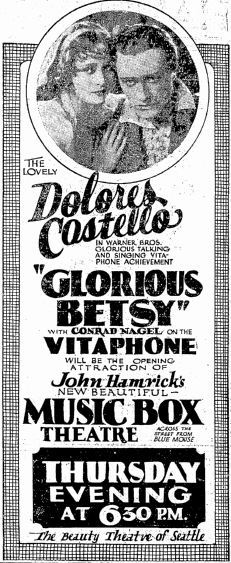
Do studio marketing staff demand “reality”-based scripts, saying “our market analysis tells us…”?
Or, is it – more probably – because the journeymen of film writing are loafing about, devoid of plot ideas, waiting for events to conspire in their favor? “Hey, Bob, a naked women’s brigade of those Somali pirates just lassoed a blimp!”
Might the hacks not doodle with a few narrative ideas of their own?
Is my case overstated? Of course, but only so that my argument might be based on an actual argument.
To put it another way:
Historical fiction, like history of any kind, is a gloss on what actually happened, which itself selects from what actually happened. That’s to say: The more something is fictionally historical, the less claim it has on “fact” – all the more so, because “fact” is already a fudge inherent in historical accounts.
“Whoa,” I hear the objection, “a film ‘based on real events’ claims only to be a fiction, like any fiction.”
It may do. But that claim is self-contradicting: It proposes that a film account’s basis in “real events” means i) less, ii) even less, or iii) nothing. And the advertising boilerplate is either fatuous or disingenuous.
From a more useful perspective: history can’t be real; only fiction can be real; fiction creates reality to the extent that it succeeds as fiction. To put it most nakedly.
My, where was I?
Oh, right, the fate of Seattle theaters – a fate duplicated all over the country, and much the world.
The claim: cultural larceny is inherent in most demolitions of cinemas, as of any kind of iconic structures, particularly ones with a claim on stylishness of any kind – the elegant, the spectacular, the demotic…
So, the Music Box:
At the time when the Music Box came to grief, in 1987, elected guardians of the city considered it within their duty of care to wave a green flag at any developer intent on bulldozing historic theaters and other architectural gems.
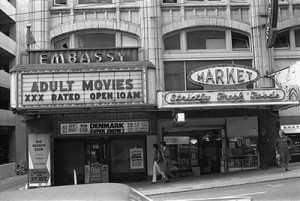
The Embassy in 1975
A stunning sacrifice was made in 1991 of the Fox/Music Hall/7th Avenue Theatre, then one of the downtown’s five surviving silent-era palaces.
Its golden-age Spanish Renaissance style represented the pinnacle of the career of local architectural icon, Sherwood D. Ford. Its owners managed to have its historical status revoked; a hearings examiner ruled that preservation should not override property owners’ reasonable profit. The city opted for demolition over preservation. The theater’s disassembled façade was auctioned off and placed in storage, to await another entrepreneur’s reasonable profitmaking, next time presumably from kitsch faux nostalgia.
A counter-example of the ruin of the Music Box was the fate of the Embassy Theatre, built in 1926 as a vaudeville house. As Joe Vogel, one of the most generous contributors on Cinema Treasures reports, the architect of the Music Box, Henry Bittman, also had a hand in other downtown theaters. The midtown Embassy didn’t feature in the 1969 Post-Intelligencer listings because by that time, it had devolved to a sad porn cinema and burlesque theater . The space survived because, after sitting dark from 1983 to 2002, it opened as a nightclub, The Triple Door, with lavish renovations of several impressive features, including a handsome proscenium stage.
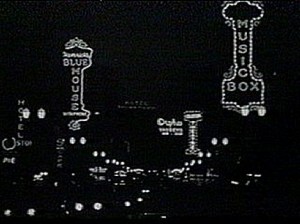
Blue Mouse and Music Box Theatre marquees at night; those of other theaters beyond.
The Blue Mouse Theatre was across the street. It was the first sound theater in Seattle, and in 1969 had only three years left to live before the Peoples National Bank of Washington opened it as a “high-rise banking facility.”
With that term, the bank desecrated the space’s 49-year embrace of metaphor.
Far to the south, by the city airport, was another cinema gem, the Lewis & Clark. True Grit and The Thousand Plane Raid were showing there. The theater was named for the explorers of the American Northwest, who charted a route from the newly acquired territories of the Louisiana Purchase in the South to the Pacific coast – a heroic undertaking known to any citizen of the Pacific Northwest.
But don’t bother to go looking for the Lewis & Clark cinema, now.
The Lewis & Clark was a palace, although of a distinctly American kind. It opened in 1957 as part of an entertainment center that could boast a gigantic, 32-lane bowling alley. It was, according to an article in The Modern Theatre of 6 April 1957, a 2,100-capacity “symphony in stone, glass, and concrete” – an “ultra-smart…smash hit in Seattle” thanks to a huge Boddie screen of 60 by 28 feet that patrons took in from the comfort of Kroehler “Push-back” Theater Chairs.
Those seats, which long remained state of the art, were an innovation of a southeast Minnesota furniture executive and davenport-bed innovator named Peter E. Kroehler of Kroehler Mfg. Co., which had begun life as the more evocatively titled Naperville Lounge Company. Kroehler had joined the company at 24, and soon was in charge. He was in his mid-60s when, in 1937, his company formed a public-seating division to make the theater chairs.
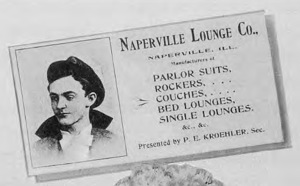 Comfort was a keystone of the Lewis & Clark cinema experience. It had a smoking-and-TV lounge, a kids’ playroom, and a snazzy ladies lounge that patrons at the time could, said The Modern Theatre, “fully appreciate.” Today, a savvy entrepreneur could recreate it as the finest 1950s retro-chic.
Comfort was a keystone of the Lewis & Clark cinema experience. It had a smoking-and-TV lounge, a kids’ playroom, and a snazzy ladies lounge that patrons at the time could, said The Modern Theatre, “fully appreciate.” Today, a savvy entrepreneur could recreate it as the finest 1950s retro-chic.
The establishment’s cafeteria-style snackbar spangled and popped with two Perlick Junior three-drink machines, three self-service Junior Cold-Displays, four jet-spray bubblers, two Manley Vistapops, one Star popcorn warmer, and three Buttermats.
 You could make a night of it at the Lewis & Clark – bowl, watch a movie, lounge about, and eat enough junk to go home with a belly ache. You could even get schooled. Spun-glass wall panels in the auditorium depicted episodes from Lewis and Clark’s intrepid but unlikely quest.
You could make a night of it at the Lewis & Clark – bowl, watch a movie, lounge about, and eat enough junk to go home with a belly ache. You could even get schooled. Spun-glass wall panels in the auditorium depicted episodes from Lewis and Clark’s intrepid but unlikely quest.
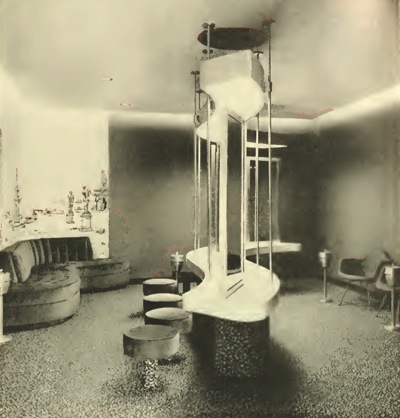
Lewis & Clark ladies lounge
But in south Seattle, as in most of America, bowling alleys and cinemas went together into the hereafter. The Lewis & Clark closed in 2004, and after a year as a church, was bulldozed.
True Grit was also showing at the John Danz cinema, across Lake Washington in the growing satellite city, Bellevue, while in downtown Seattle another John Wayne vehicle, Hellfighters, was the “co-hit.” Russian-born Seattle theater impresario John Danz owned both his namesake theater and the Colonial. It opened in 1913 and its colorful history included being bombed in 1928 labor skirmishing. Associated Press reported on May 12: “The bomb, manufactured with a motion picture film can and dynamite and loaded with rusty scrap iron, exploded in the alley between the Colonial and Capitol theaters here last night while both show houses were filled.
“It was the sixth theater bombing here since the first of the year. The detonation, which shattered windows in the alley and rocked the business district, alarmed theatre visitors and crowds in adjacent streets and caused a near panic in the audience of the Colonial theater.”
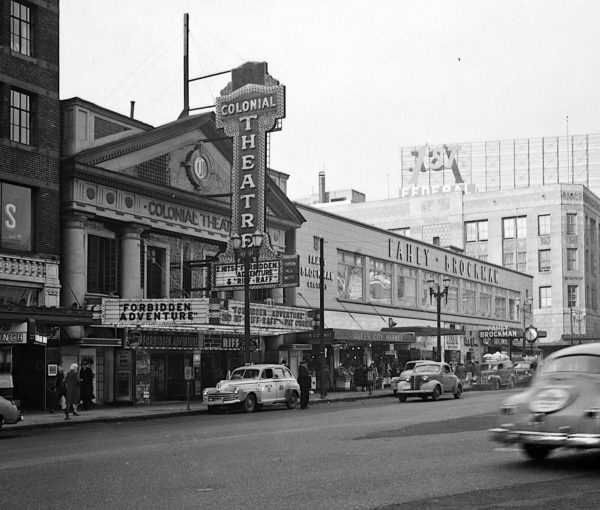
The late, lamented Colonial Theatre in downtown Seattle, in 1948. Seattle Municipal Archive
That the device was made from “a motion picture film can and dynamite” is a curious, somehow cinematic detail.
The Colonial’s Greek Revival façade survived until the 1980s until developers accomplished what the bombers could not.
[A note on John Danz: In 1882, when he was five, his family fled Russia due to religious persecution. In 1889, he traveled from east coast to west with his father, in a covered wagon. He worked as a stage driver in Nevada in 1895-1896, and as haberdashery clerk around the West, before opening his own store in downtown Seattle. He ran that from 1903, and when 1913 came, he seized on the growing popularity of films by showing nickelodeon films for a nickel a pop, and then opened a cinema next door. His cinema business flourished – even during the decade-long Great Depression of 1929, on – and kept flourishing until his death in 1961. A storybook American success story!]
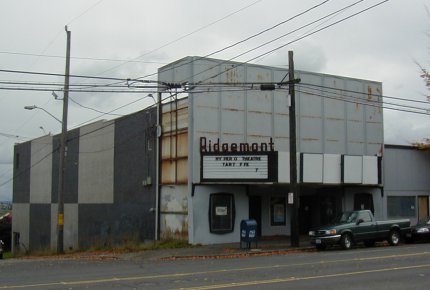
Ridgemont exterior, 1980s
The more one explores Seattle’s film infrastructure of 1969, the more it becomes apparent that the Post-Intelligencer’s movie pages omitted some of the story – about the art-house cinemas, for example. Bill White, a locally raised journalist who has been preparing a memoir of his 55-plus years of filmgoing in the city and its environs, has recalled going 15 miles north to the small city of Edmonds, beyond Seattle’s northern border, to watch the likes of Fellini’s Juliet of the Spirits, which had come out in 1965, and Marcel Carné’s 1945 classic, Children of Paradise.
Before that, White notes, the go-to house for art films was the Ridgemont – not on the P-I’s movie page. It was on a major thoroughfare in a neighborhood about five miles north of downtown, and counted among its distinctions that it was the subject of a 1968 United States Supreme Court ruling that invalidated a Seattle film-censorship ordinance. Well, since the mid-1950s it had been showing foreign art films! During that period, recalled local historian Paul Dorpat, “since most of these were foreign films with subtitles, the Ridgemont was considered by some a ‘communist front’ and the lights of its marquee were at risk — pelted often with rocks, eggs, and even excrement.”
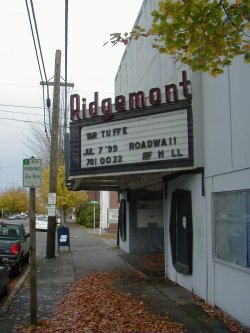
The Ridgemont Theatre marquee in 2000
Next it became a porn cinema, showing crap rather than suffering it, flung. Then in the late 70s to the late 80s its tone lifted with a return to mainstream cinema.
Of course, these days switching cinemas from art to smut hardly seems likely to rekindle demand; perhaps the passing away of porn as a recourse for ailing theaters is part of what is now driving so many theaters into gloom and closure.
The Ridgemont, which had opened in 1919 as Houghton’s 78th Theatre, closed in 1989, fell into disrepair while serving as a local theater company’s props and costumes workshop, and was demolished in 2001.
You wonder what was within its walls.
My back door has been off its hinges for over three weeks, now. I’d best get back to securing it, and myself. But wait. I almost forget to rail one more time – at a film that was playing in the Seattle area, that week of 17 August 1969: Oliver!
Carol Reed’s 1968 film adaptation of Lionel Bart’s outstanding stage musical was playing in two cinemas. Unforgivably, it omitted some of the best songs, in particular “That’s Your Funeral.” But so, too, had the first Broadway production, in 1963. (The LP recording featured Davy Jones, pre-Monkees, as the Artful Dodger, while in a 1967 London revival Phil Collins performed as the savvy child pickpocket. The original stage production almost featured Michael Caine. Reportedly he was crushed when he wasn’t chosen to play the sociopathic brute, Bill Sikes, who eventually dispatches Oliver’s lovely protector – and his own paramour – Nancy. The role went instead to a former professional boxer, Danny Sewell. He held the role for almost six years, on the West End as well as the Broadway and American touring productions.)
Leaving out “That’s Your Funeral” can perhaps only be explained by some squeamishness in American producers of films and the stage musicals. Had they cut the song because they considered them too ghoulish for American tastes, however comical? It begins with the observation of the town beadle/charitable-institution overseer, regarding Oliver:
He’s a born undertaker’s mute.
I can see him in his black silk suit,
Following behind the funeral procession
With his features fixed in a suitable expression.
The part of the undertaker, Sowerberry, was never better performed than in the original London staging, in 1960 – by Barry Humphries, pre-Edna Everidge, Housewife Superstar. (The full song, with unassociated visuals, is here.)
I wouldn’t have gone to the Hollywood bowdlerization in 1969, just as I can’t imagine stomaching it, now.

The Music Box does its social duty, apparently.
Printed from Moving Image Archive News: http://www.movingimagearchivenews.org
URL to article: http://www.movingimagearchivenews.org/when-you-renovate-keep-your-eyes-open-for-movies/
Click here to print
